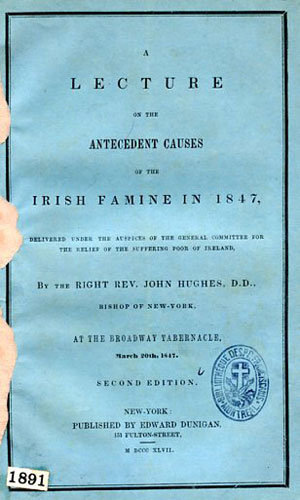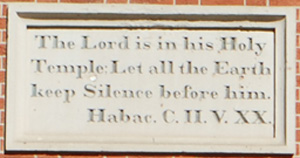 |
Return to Paca Street: The Renovated St. Mary's Spiritual Center The quote from the Book of Habakkuk set in the brick over the main entrance to St. Mary's. It is unusual in that it is in English, not in Latin. Commentary by Neal J. Conway |
|---|
The U.S. Catholic church owes much for its above-ground launch after independence to French priests and sisters fleeing the French Revolution, some bearing the scars of torture and imprisonment. In the 1790s, Fathers of the Society of St. Sulpice came to Baltimore and started a seminary on Paca Street. From there they fanned out to the American frontier. One established Mount St. Mary's College. Another became an early president of Georgetown. In 1808 Archbishop Carroll gave the Sulpicians supervision of St. Elizabeth Ann Seton and her new order of sisters. Mother Seton was given a house for her school on the seminary campus fronting Paca Street.
Neither Catholics nor France were popular in the early 1800s. President John Adams staved off a popular, hothead urge to go to war with the country of Lafayette. As Mother Seton was preparing to leave New York City forever, one of her bigoted relatives passed a comment about Maryland being the "Frenchified State."
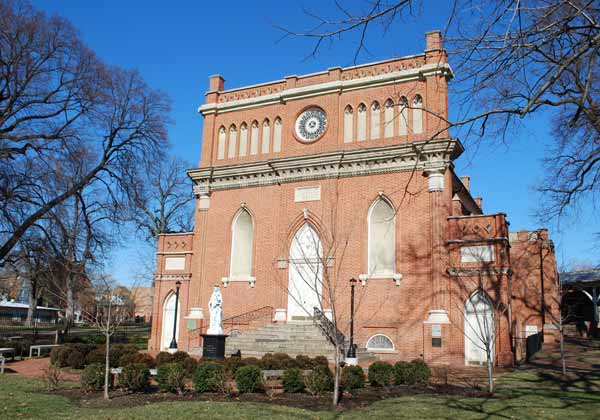
Mother Seton arrived in Baltimore on the Feast of Corpus Christi, June 16, 1808, the very day the Sulpicians were dedicating their seminary chapel, St. Mary's. It is the oldest gothic Catholic church in the U.S. and an early use of gothic. This style was not favored by Catholic builders until the 1840s. In times when Catholics were viewed with suspicion, Archbishop Carroll thought that gothic buildings were too in-your-face.
I'm not showing the recently restored interior because, while it's bright and open, there's nothing outstanding about it. The "Chapelle Basse" in the basement is where Mother Seton took her vows.
Around Mother Seton's time, the "Chapelle Basse" saw the birth of The Oblate Sisters of Providence, the first African-American order of nuns, founded by Mary Elizabeth Lange. One of the Oblate Sisters was Sr. Theresa Maxis Duchemin who later founded the Servants of the Immaculate Heart of Mary (IHM). They, having a branch based in Scranton, taught my parents at their high school. Fr. Michael McGivney, Founder of The Knights of Columbus, studied at the seminary. Ripples of Faith.
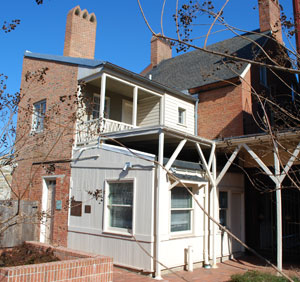
I've said before that it's amazing how many of Mother Seton's buildings and possesions have survived. Here we see her leather-covered chest. You would not think that it's over 200 years old. The picture of Jesus is probably Mexican. In the early 1800s, American Catholics obtained a lot of their religious art from Mexico.
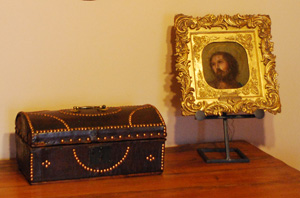
A saint's Bible. The first page of The Book of Psalms in St. Elizabeth Ann Seton's Douay Rheims Bible bearing her marginalia penned 200 years ago. In the left margin are asterisked comments on the verses. In the right is a list of Psalms appropriate for the feasts of Corpus Christi and Sacred Heart. The paragraph under the list seems to be a paraphrase, "It is good for me to cleave close to God, to place my [hope] in the Lord God."
After Mother Seton's translation, this Bible was kept as a souvenir by her friend and confessor, Sulpician Father Simon Gabriel Bruté de Remur. He took it with him when became the first bishop of Vincennes Indiana. It is on loan to the spiritual center from the Diocese of Vincennes where the cause for Fr. Bruté's canonization has been opened.
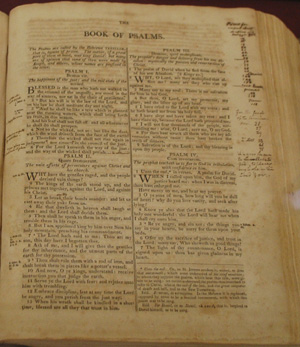
One of Fr. Bruté's drawings. He was an accomplished artist. His sketches of Mother Seton are not as refined as this. I think that he drew her in a hurry as when he caught sight of her dancing around the cemetery.
In my fictional treatment of her, I imagine that she didn't like being sketched and that she gets mad at the priest for persisting. But of course he knows and loves a saint when he sees one and he can't help it.
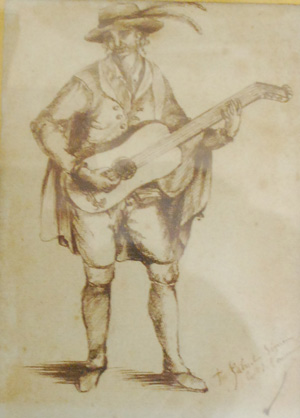
This I found amusing. There are pictures of the Seton kids in the house. I think they must have been drawn from memory or descriptions, like police sketches. The most famous portrait of Mother Seton herself is a conception.
This is supposed to be Rebecca, or "Bec," the second oldest daughter. It's true that adolescents looked older in those days, but Bec died when she was fourteen. Before that she, after injuring her hip, was devoured by consumption over a period of two years. In her last months, Mother Seton held her almost constantly to the point where Mother's arm was paralyzed. Bec's suffering was the grisliest of all that family's. I suspect that in future years, it will be recognized that the remains of more than one saint repose in Emmitsburg.
The Seton boys are depicted in their portraits as dashing young men. However Richard, the younger, seems to have been a large oaf. He was on the border of being a classic wastrel of the time. However he was honorably discharged from life after catching a fever from a man he nursed aboard a navy ship. His older brother William also served in the U.S. Navy. Because both sons were Navy men, their mother is Patroness of The Sea Services.
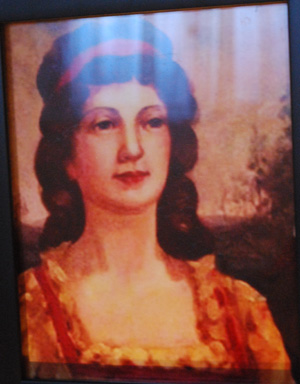
Lastly, related to all the subject of pre-Civil War American Catholicism is something I recently picked up. It's a pamphlet of a lecture on the Irish famine delivered on March 20, 1847 by New York Bishop "Dagger John" Hughes. Hughes spoke at The Broadway Tabernacle. This is very interesting because the Tabernacle was a Presbyterian joint. Hughes was willing to engage as well as confront.
New York in 1847 was being slammed by waves of famine-caused immigration from Ireland, so I bet that The Broadway Tabernacle, which could hold 2400 people, was packed.
I haven't read the pamphlet yet. It requires delicate handling. It was printed by Edward Dunnigan on Fulton St. Dunnigan did all the Catholic printing in New York from the 1830s-50s. Stuff like this is currently dirt cheap which is great for someone like me who knows its significance.
I also got a Dunnigan-printed history of Catholics in New York by "J.R. Bayley." This is, of course, Mother Seton's nephew, James Roosevelt Bayley, her connection by marriage to U.S. presidents and the first bishop of The Diocese of Newark.
